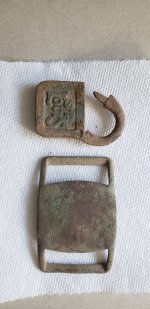Timberdoodle
Sr. Member
I agree with idea of a fluid bed in a submersible but I have a lot of reservations about the size and location of the fluid beds in the pic and the ability for fine gold to ever enter the bed. The velocity and turbulence is going to keep fine gold in suspension above the screen and carry a large percentage out. Fine gold simply does not settle as fast as larger gold. I think Reed's mention of a hydraulic classifier like Reggie Gould used would help greatly with this.
I am having a major issue with the 12v bilge pump running at 24v looking at the size of the wire leads to the dredge and the current required.
12v 4700gph bilge pump pulls 16amps
Increasing to 24v will result in the following based on pump affinity laws Pump Affinity laws
Speed of the pump would double and volume would double
PSI would increase 4X
Power required to run at double the speed would increase 8X. This means the .25hp pump is now running at 2hp. (for 24v operation this means a 64amp draw) I verified this by connecting a 12v 1100gph 3 amp pump to 24v and got 12amp draw. (For only 10 seconds, the pump was screaming)
The lead wires in the pic's look like 8-10 gauge and the line losses for running multiple pumps is going to be extensive. I have run single 12v 3700gph pumps on 20ft of cable and needed to use 6 gauge for a single pump drawing 16amps to eliminate all line losses. I don't expect these are truly running at 24v after the line loss.
I'm wondering if the only batteries capable of handling this high amperage discharge/charge are lithium ion.
I am going to try the multiple battery method at some point to run at 12v. I have no confidence in running at a true 24v for these pumps for long periods. Maybe I'll try 18v.
I am having a major issue with the 12v bilge pump running at 24v looking at the size of the wire leads to the dredge and the current required.
12v 4700gph bilge pump pulls 16amps
Increasing to 24v will result in the following based on pump affinity laws Pump Affinity laws
Speed of the pump would double and volume would double
PSI would increase 4X
Power required to run at double the speed would increase 8X. This means the .25hp pump is now running at 2hp. (for 24v operation this means a 64amp draw) I verified this by connecting a 12v 1100gph 3 amp pump to 24v and got 12amp draw. (For only 10 seconds, the pump was screaming)
The lead wires in the pic's look like 8-10 gauge and the line losses for running multiple pumps is going to be extensive. I have run single 12v 3700gph pumps on 20ft of cable and needed to use 6 gauge for a single pump drawing 16amps to eliminate all line losses. I don't expect these are truly running at 24v after the line loss.
I'm wondering if the only batteries capable of handling this high amperage discharge/charge are lithium ion.
I am going to try the multiple battery method at some point to run at 12v. I have no confidence in running at a true 24v for these pumps for long periods. Maybe I'll try 18v.





 It's not a dredge that you turn a beginner loose with, hehe. It will suck the blood thru your finger tips if you get too close...
It's not a dredge that you turn a beginner loose with, hehe. It will suck the blood thru your finger tips if you get too close...



